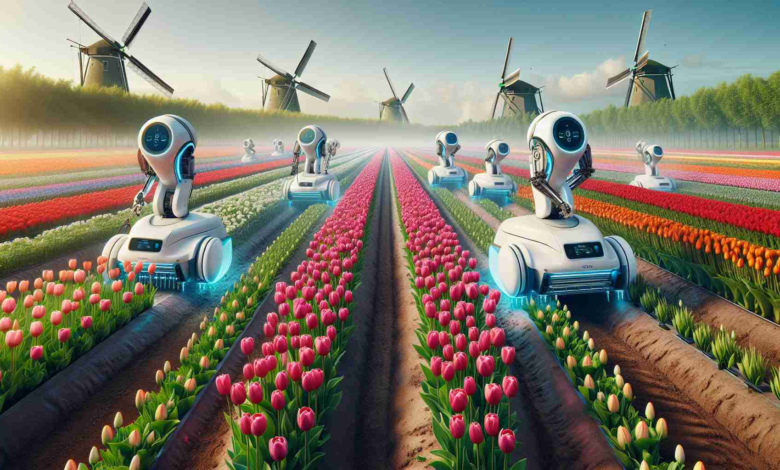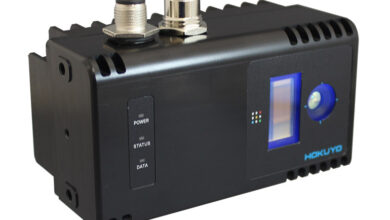AI-Powered Robots Revolutionizing Tulip Farming in the Netherlands

As spring beckons, a futuristic scene unfolds in the Dutch countryside, where innovative tulip selection robots are transforming the traditional tulip farming industry. These high-tech machines, armed with artificial intelligence, roam the blooming fields with a critical mission to detect and eliminate diseased tulips, safeguarding the health of their neighboring flowers and the success of the crop.
Research has shown that tulips, symptomatic with distinctive red streaks on their leaves, can be identified with the help of these smart robots. The robotic technology is capable of capturing thousands of images and learning to recognize signs of illness more accurately over time. One such machine, the Selector 180, is a pioneering autonomous robot designed by H2L Robotics in Delft. It’s equipped with AI and precise GPS tracking to single out and address affected plants in a non-invasive manner.
The change brought about by these robots has been well received by the tulip industry, which sees it as a stride toward reduction of chemical and pesticide use. Moreover, this mechanization is becoming a necessity as fewer people are willing to perform the laborious task of monitoring tulip health, and many experienced workers approach retirement age.
One farm already benefiting from this technology is WAM Pennings, where they have deployed a tulpenselectierobot. While it’s noted that these machines still aren’t perfect and require further improvement, they already perform around a quarter of the work that humans do at the nursery.
As the effectiveness of these robotic workers improves annually, it paves the way for a future where robots could potentially assume the full role of tulip selection, revolutionizing an industry steeped in tradition and creating an environmentally friendlier, sustainable model for agriculture.
In summary, the Dutch tulip fields are undergoing a technological transformation with the introduction of AI-driven selection robots. These machines promise to reduce chemical use and make up for a declining labor force, offering a glimpse into the future of agricultural practices.
The Dutch Tulip Industry Embraces AI Technology
The Netherlands, long celebrated for its picturesque tulip fields and as a global leader in flower agriculture, is witnessing a technological transformation that marries tradition with innovation. The introduction of artificial intelligence (AI) into tulip farming is an exciting development indicating a broader trend in agriculture towards precision farming and sustainable practices.
These AI-driven tulip selection robots traverse the vibrant Dutch fields performing tasks that once fell to human hands. The use of AI allows for real-time monitoring and analysis of individual plants, which is a step forward in the agricultural industry’s push for efficiency and environmental stewardship. Notably, the Selector 180, designed by H2L Robotics from Delft, is at the forefront of this advancement, offering precise identification and treatment of diseased tulips.
The tulip industry is a significant sector within Dutch horticulture. In 2021, the Netherlands exported 2.3 billion tulip bulbs, with a significant portion going to European and North American markets. As demand for tulips remains high, incorporating robotics into their cultivation could ensure the Netherlands maintains its lead in the global market.
Market Forecasts and Technological Growth
The global market for agricultural robots and drones is expected to grow significantly in the coming years. According to various industry analyses, the market could surpass $20 billion by 2025, with a compound annual growth rate (CAGR) of 19% to 25%. Tulip selection robots and similar automated solutions will likely be key contributors to this growth as they address critical points like labor shortages and environmental concerns.
Reduced Chemical Use and Sustainability
A major benefit of these robots is their potential to reduce the use of chemicals and pesticides, an issue that has garnered increased public attention and government regulation. Precision agriculture allows for targeted treatments rather than blanket applications, contributing to a reduction in chemical runoff and environmental degradation.
Labor Shortages and Robotics Adoption
The industry faces labor challenges as well, with a significant portion of the agricultural workforce aging or uninterested in physically demanding field work. AI robots like the tulip selection machines address this gap by performing repetitive tasks, reducing dependencies on human labor, and potentially increasing productivity.
A Future Shaped by Robotics
Despite their utility and benefits, these robots are not yet a complete replacement for human labor. Ongoing improvements in AI, machine learning algorithms, and mechanical design are necessary to expand their capabilities. As these technologies mature, it is anticipated that robots will handle an increasing proportion of farm work, leading to a more sustainable and efficient industry.
Conclusion
In conclusion, the implementation of AI-driven tulip selection robots is symbolic of a larger trend towards high-tech, sustainable farming that could revolutionize not only tulip cultivation but agriculture at large. This pivot could help resolve key issues such as labor shortages and pesticide overuse, ensuring that the Dutch tulip fields continue to thrive for generations to come, while boosting productivity and sustainability in the agriculture industry globally.
For more information on agricultural innovations and market trends, consider exploring websites like Wageningen University & Research and Rabobank, institutions that provide insights into the future of farming and economic forecasts for the industry.

Marcin Frąckiewicz is a renowned author and blogger, specializing in satellite communication and artificial intelligence. His insightful articles delve into the intricacies of these fields, offering readers a deep understanding of complex technological concepts. His work is known for its clarity and thoroughness.


